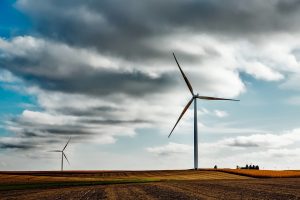 “If you want to know how wind works for America, just ask a Texan.” That’s according to Tom Kiernan, CEO of the American Wind Energy Association (AWEA), which just released its newest wind industry market report.
“If you want to know how wind works for America, just ask a Texan.” That’s according to Tom Kiernan, CEO of the American Wind Energy Association (AWEA), which just released its newest wind industry market report.
The AWEA report shows Texas is the nation’s indisputable wind powerhouse, including serving as home to nearly a quarter of America’s wind jobs. But wind is just one piece of the puzzle, and recent reports confirm the pieces are in place for Texas to blaze the clean energy trail.
Wind is thriving in Texas and solar is growing, while the electric grid remains reliable and billions in savings await. But the Lone Star State can do more: California has more than 10 times as many solar jobs with less than a quarter of Texas’ solar potential. When it comes to clean energy, will lawmakers during this 85th Texas Legislative Session position the state to lead the nation?
Mounting evidence
In a span of a week, four reports came out with significant findings for Texas’ clean energy economy:
- Wind juggernaut: AWEA’s report is full of Lone Star wind tidbits. In addition to accounting for four times as many jobs as the next state (Iowa), Texas is now home to roughly one-fourth of the nation’s wind capacity, with more on the way. Additionally, wind projects are providing private landowners with millions in land lease payments – more than $60 million for Texas farmers and ranchers, to be exact. The state also has acquired nearly $40 billion in wind energy investment. Clearly, wind is checking the jobs, growth, and investment boxes. [Tweet “4 Signs Texas Could Lead the Clean Energy Economy – But Will It?”]
- Solar surge: The Solar Foundation’s new census shows Texas solar jobs experienced 34 percent growth last year, significantly surpassing the 12 percent projected growth and propelling Texas to the number three spot. Although undeniably impressive, the “solar jobs per capita” tells a less sunny story: Texas is in the 37th place (California is in 4th). As solar grows, so will the job numbers.
Wind and solar are accounting for more Texas jobs than ever before, while bringing substantial investments into the state.
- Grid reliability: Closing coal plants doesn’t mean the lights will go out. Looking at data from Texas’ main grid operator, the Electric Reliability Council of Texas (ERCOT), a new study from Public Citizen examined what would happen if Dallas-based Luminant shut down two of its largest coal plants. Conclusion: Wind, solar, and natural gas will fill any gap left by coal, and potential issues will be mitigated “without the need for additional transmission upgrades beyond what is currently planned by ERCOT.” In other words, Texas already is well-equipped for coal shutdowns.
- Amazing savings: Prioritizing clean energy will lead to hefty Texas savings, as evidenced in the new Environmental Defense Fund report. Lower pollution means billions of dollars avoided in healthcare costs. At the same time, enhanced energy efficiency results in billions of power savings. Increasing the use of wind and solar PV, which need virtually no water to create energy, avoids the need for billions of additional power-sector water. And focusing on homegrown energy sources, rather than coal imported from other states, translates to billions of avoided import costs.
When it comes to Texas’ clean energy economy, what’s not to like? Wind and solar are accounting for more Texas jobs than ever before, while bringing substantial investments into the state. The growth of cleaner power sources means less reliance on imported coal, a transition that won’t harm our electric grid’s reliability.
These four reports show Texas clean energy is primed and ready to go. The state has a thriving competitive electricity market that benefits people and the economy thanks to forward-looking policies put in place years ago. As Texas’ current legislative session continues, we hope policymakers will keep that market in place and allow the growing clean energy economy to flourish.









